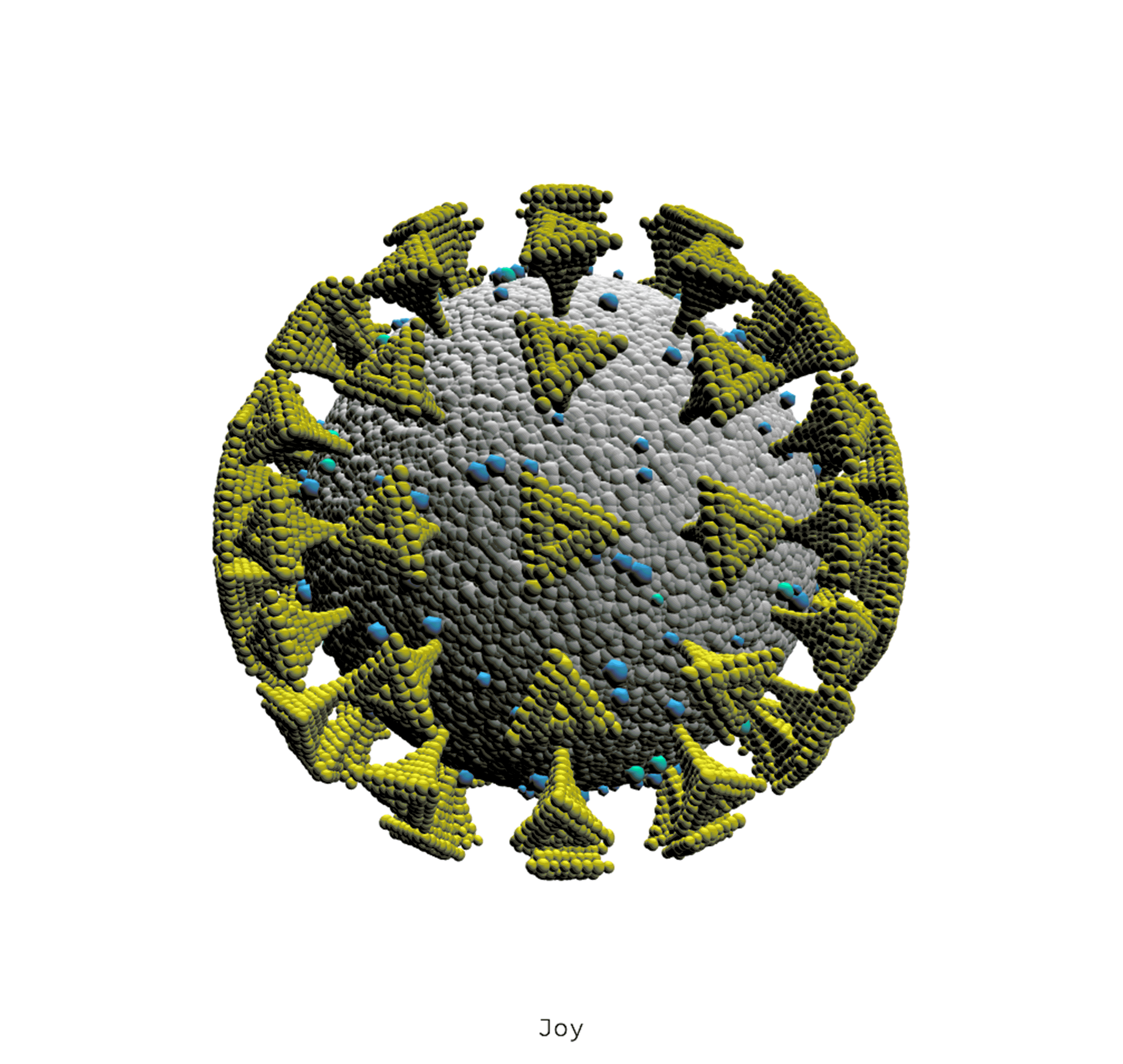Shades of Corona
Revisualizing Coronavirus with different emotions
An experiment to recreate coronavirus to evoke different emotions.
#coronavirus #medicalillustration #communication #emotions #experiment #openprocessing
Year
2020 | Personal Project

The COVID-19 pandemic has changed the emotional landscape of our society right now. We all had our own experiences, positive and negative through these months of lockdown. One striking visual that has impacted people, is the image of Coronavirus created by Alissa Eckert, a medical illustrator at the U.S. Centers for Disease Control and Prevention (CDC), along with her colleague Dan Higgins. This colorful 3D rendering of a spiky fuzzball has spread around the world at least as fast as the coronavirus.
This image of coronavirus is actually designed keeping the public in mind. Medical illustrations like this show how artists can help make the terrifying world around us feel more comprehensible by giving things a visual form.
This ‘beauty shot’ of coronavirus is a work of visual communication with a goal to convey an attitude as well as information. The image here reveals the construction of the virus which consists of different kinds of proteins and genetic material. The 3D rendering of the novel coronavirus is not what would appear if you could see the virus with your own eyes. So, more than scientific accuracy it is designed to evoke emotions.

The form, shadows, colors, etc. are designed to communicate two ideas:1) the seriousness of the virus and 2) the lucidity/hope that everything can be mapped and figured out. This is how Alissa hit the sweet spot in the scale of drama.

I build this sketch of coronavirus in p5.js to revisualize it as an experiment.
Can we recreate this coronavirus sketch to elicit other emotions also?

Plutchik's Wheel of Emotions
In 1980, Robert Plutchik diagrammed a wheel of eight emotions: joy, trust, fear, surprise, sadness, disgust, anger and anticipation, inspired by his Ten Postulates.
Each primary emotion has a polar opposite, so that: Joy is the opposite of Sadness Fear is the opposite of Anger Anticipation is the opposite of Surprise Disgust is the opposite of Trust .
Plutchik also theorized twenty-four "Primary", "Secondary", and "Tertiary" dyads.
1. Anger + Anticipation = Aggressiveness
2. Anticipation + Joy = Optimism
3. Joy + Trust = Love
4. Trust + Fear = Submission
5. Fear + Surprise = Alarm
6. Surprise + Sadness = Disappointment
7. Sadness + Disgust = Remorse
8. Disgust + Anger = Contempt
9. Anger + Joy = Pride
10. Anticipation + Trust = Fatalism
11. Joy + Fear = Guilt
12. Trust + Surprise = Curiosity
13. Fear + Sadness = Despair
14. Surprise + Disgust = Unbelief
15. Sadness + Anger = Envy
16. Disgust + Anticipation = Cynicism
17. Anger + Trust = Dominance
18. Anticipation + Fear = Anxiety
19. Joy + Surprise = Delight
20. Trust + Sadness = Sentimentality
21. Fear + Disgust = Shame
22. Surprise + Anger = Outrage
23. Sadness + Anticipation = Pessimism
24. Disgust + Joy = Morbidness
The Process






Result
8 Primary emotions








Dyads (Combinations)
Love = Joy + Trust

Shock = Surprise + Disgust

Shame = Fear + Disgust

Pride = Anger + Joy

To be continued.....
There are many other factors like color, material, texture, lighting, focus, and composition that play a key role in making an image emotive. Although this experiment is limited to the only some factors like form and proportion it gives us a peek into how the emotions are interconnected and forms a pattern. It also evinces our ability to identify emotions in inanimate objects like coronavirus.

Fleo | Writing aid for people with Parkinson's tremors
Designing for second life | Rethinking the lifecycle of appliance packaging
Upshift Deck | Upcycling Behavior Intervention Toolkit
Elephants & Villages | A Boardgame About Elephant-Human Conflict
Shades of Corona | Revisualizing Coronavirus with different emotions
WaterCycle | Water purification aids during flood
Sensory Padukas | A souvenir from the future
Swarm – I | Honeywell Aerospace Design Challenge
Possessed by Possessions | A systems study on consumerism
Weardo | Daily wear rental service
